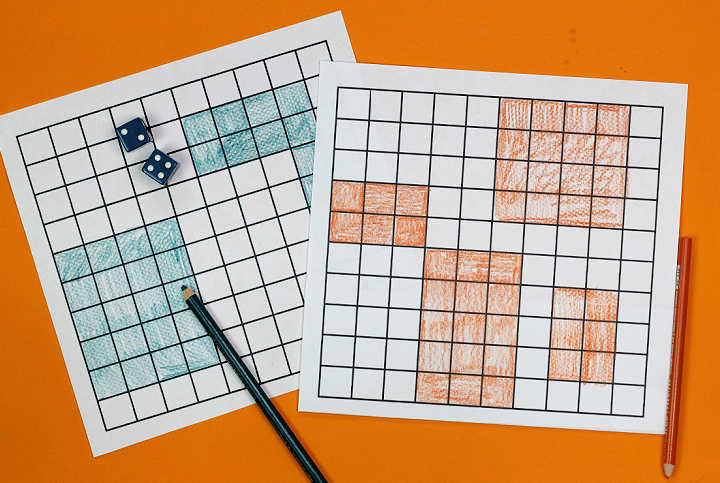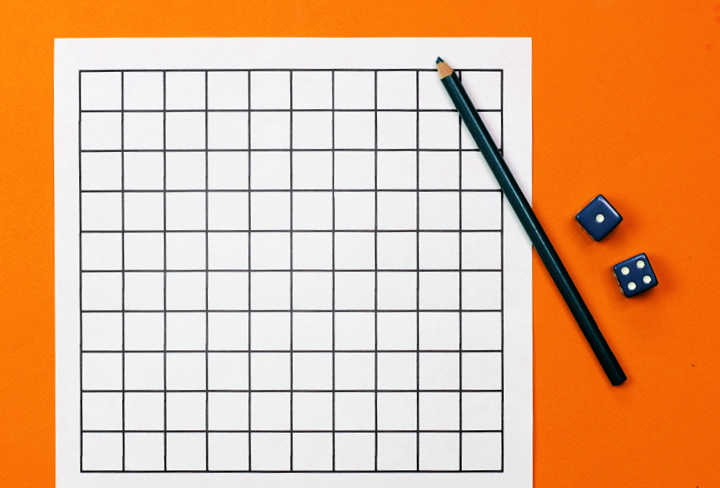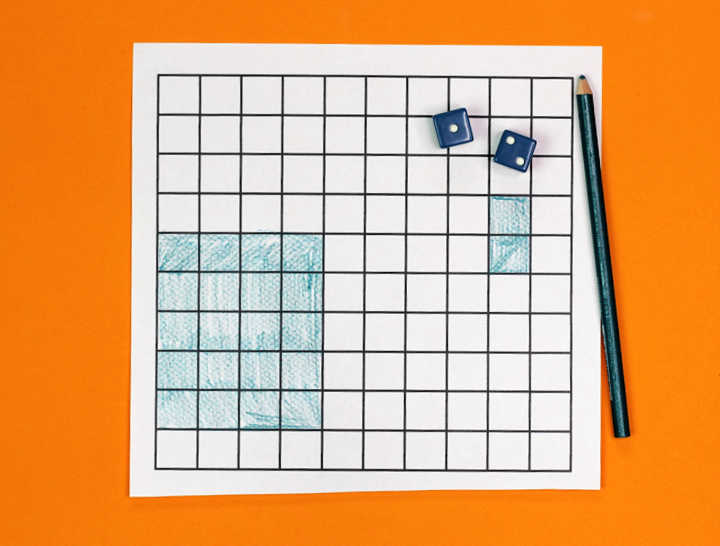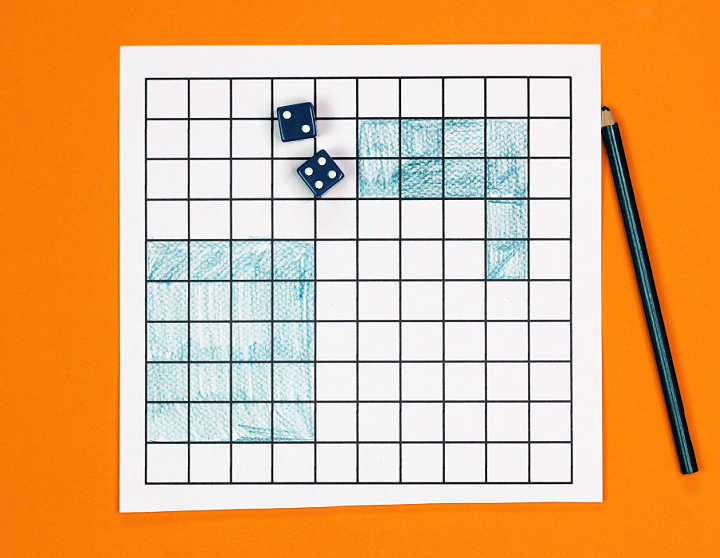The array game helps kids learn multiplication skills for numbers 1-6 by focusing on the use of arrays on a grid to visually represent calculations.
When I was in school we learned multiplication through sheer willpower of memorization. Fortunately, today's pedagogy offers students a more comprehensive approach to understanding how multiplication works. Arrays are a useful learning tool because the arrangement of rows and columns make it easy for kids to visualize a multiplication equation.
This multiplication array game, along with games like Trominoes and a multiplication dice game are great activities to supplement mathematics learning either in the classroom or at home. It's an excellent addition to your child's STEM learning!

How to Play the Array Game
Supplies:
- 2 10x10 grids. Feel free to use our free printable page of grids, draw your own, or use graph paper.
- Pen or pencil
- 2 dice
- 2 enthusiastic kids ready to play

Objective:
To shade in as much of your grid as possible, according to the rules.
Step by Step Instructions
Each player has their own 10x10 grid and pencil.
Taking turns, players roll both dice and then shade in the appropriate array on their grids. For example, if you roll a 4 and a 5 you would shade in a 4x5 array. You can choose to shade the array either vertically or horizontally. For example, the array could be either 4 rows by 5 columns or 5 rows by 4 columns.

For each shaded array, record your score for that turn. For example a 4x5 array would earn a score of 20.
Arrays can be next to each other, but you may not overlap arrays.

As you continue taking turns and the grid fills up, you may find that you can no longer fit your array into the grid. In that case you forfeit your turn and you can try again on your next turn.
Ending the game:
There are a couple of ways to end the game:
- The game ends after a pre-set period of time. Add up the scores. Whoever has the highest score wins.
- The game ends when the one player can not longer fit an array into the grid. In this case, instead of forfeiting their turn, the player loses.
- The game ends when one player has filled in their entire grid. This will take longer than the first two options. Depending on the luck of the roll, players may end up forfeiting many turns.

Array Game Variations
Some array game variations are obvious, such as changing the size of the grid, or the number of players. Here are some useful ways to switch up game play to even more fun.
Variation 1:
This modification teaches the distributive law of multiplication and can be applied to all the array game variations. When a player rolls a total that doesn't fit on the grid, they can break up the factors. For example, if a player rolls a 6 and a 4, they can shade in a 2x4 and a 4x4 array instead of a 6x4 array.
Variation 2:
Use a larger grid, at least 20x20, to be shared by two players. With this modification, players mark their arrays on one grid. One player shades in their arrays with Xs, the other with Os. Alternatively, players can use different color pencils to tell their arrays apart.
Variation 3:
Any number of kids can play, and the more players you have, the more likely the game will result in a tie. Each player has their own grid. Taking turns, they fill in their arrays. As players lose the ability to shade in a score on their array, they are out. The last person left to be able to shade in an array is the winner.
Variation 4:
Single player game. One player attempts to fill in as many squares of the array as possible before throwing a score that no longer fits on the grid. The player focuses on multiplication skills as well as a good strategy to filling up their grid.



Rebecca says
Thank you for the games, we greatly enjoy them, but the multitude of ads and getting through them to see all of the instructions is daunting!
However, will persevere!!!
Erica says
Thanks for your feedback, Rebecca!
Abby says
It would be helpful if there was a printable pdf of the the instructions and different variations.